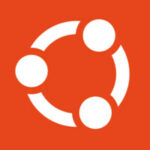Summary:
• Pivotal today announced the release of the Spring Framework 4.0.
• A central component of the recently announced Spring IO platform, Spring Framework 4.0 gives both Java and Groovy developers a simpler way to deliver and integrate new application architectures, big data, devops and cloud-friendly deployment.
• In addition, Spring Framework 4.0 offers deep support for Java 8 and key Java EE 7 specifications that enables developers to be instantly productive with the latest Java features.
• Enablement of Spring Boot – a new Spring technology that delivers unprecedented productivity to Java development, competitive with frameworks like Ruby on Rails.
• Many other enhancements and new capabilities are now foundational in Spring, such as built-in WebSocket, REST APIs, HTML5 and web messaging support for mobile and similar modern web applications.
A different approach to software development is being adopted to meet the ever-changing customer requirements for additional speed. Traditional application stacks and engineering delivery processes have similarly evolved to meet these needs. Pioneered by web giants’ requirements to operate continuously and at massive scale, modern architectures need to support applications that deliver an integrated user experience that factors in mobile, social, cloud, and big data. Developers must now be able to create a much larger class of applications – in shorter amounts of time – and be familiar with a wide range of technologies.
“With today’s release of the Spring 4.0 Framework, we have taken another important step to help millions of Java developers around the world capitalize on new trends in the market,” said Adrian Colyer, CTO of Application Fabric at Pivotal. “Having grown to become the dominant enterprise programming model for Java, today’s enhancements to the Spring Framework add support for these new types of applications so they are much easier to build and operate at scale — in any environment.”
Spring Framework 4.0 is a key part of our mission to deliver the Spring IO platform – a cohesive and simple model and toolkit for both new and traditional application architectures. Spring IO applies the core productivity and portability benefits of Spring to modern application development, just as the first Spring Framework re-imagined the landscape of enterprise Java applications a decade ago.
A major goal of Spring IO is to make Java a leader in developer productivity via components like Spring Boot. “The bar for developer happiness and intolerance of boilerplate code has been set very high at Pivotal Labs, which historically has done a lot of Ruby on Rails development,” said Edward Hieatt, chief operating officer, Pivotal Labs. “Our Ruby on Rails developers who use Spring Framework 4.0 with Spring Boot are impressed with its productivity and ability to address a wide range of scenarios on a single programming model.”
Spring Framework 4.0 introduces many new capabilities including:
• 1st Class Java 8 support throughout the framework
◦ Elegant expression of callbacks using lambdas;
◦ JSR 310 date & time integration;
◦ Java 8 based parameter name discovery.
• Comprehensive, secure REST stack:
◦ Single solution for Web App or REST with Spring MVC;
◦ AsyncRestTemplate support for asynchronous REST services;
◦ Integrates seamlessly with Spring Data REST, Spring Social, Spring Security.
• Full HTML5/WebSocket integration:
◦ Cross-browser and firewall friendly support via advanced protocol negotiation;
◦ Integrated messaging in web applications via STOMP sub-protocol;
◦ Integration with client and server side message brokers (msgs.js and RabbitMQ).
• Next generation annotation – driven programming model:
◦ Custom composable annotations, with stereotyping support for easy assembly;
◦ Powerful annotation scoping and overriding model;
◦ Spring Expression Language support.
• Java EE 7 support:
◦ JMS 2.0, JTA 1.2;
◦ JPA 2.1, Bean Validation 1.1;
◦ JSR-236 Concurrency Utilities.
Spring Framework 4.0 is open source and available at no charge under an Apache 2.0 license.





